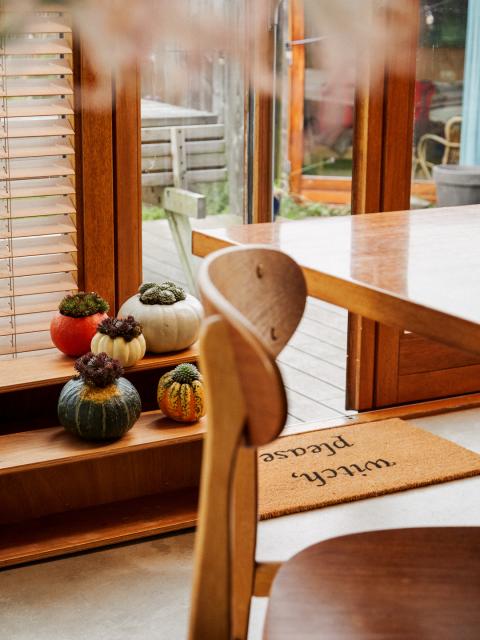1. Insulate with leaves
Don’t stick fallen leaves in the garden waste bin just yet. Rake the leaves off your lawn straight into the border, where they'll provide a natural layer of insulation against frost. Keep your lawn fairly leaf-free and cut it one more time before winter arrives. In the winter you can treat your lawn to some garden lime for a fresh green colour come springtime.
2. Protect your tap
Remove the garden hose from the outdoor tap and shut it off securely — you don’t want it to freeze and be damaged by the expanding ice. Zinc watering cans can also be damaged by ice, so tidy them away or place them upside down so that no water can get in.
3. Think of the wildlife
Birds and other creatures can do with some extra attention in the autumn and winter. Our article on how to make your autumn garden wildlife-friendly offers some smart tips on how to encourage visitors into or out of the garden.
4. Plant check
Some plants are not bothered by the cold, whilst others are quick to give up the ghost. Our article "Leave plants alone, prune them or bring them indoors?" tells you everything you need to know. Put its tips into action and your outdoor plants will get through the coming winter just fine.
5. Remove annuals
Annual plants have now finished flowering, so you can remove them and throw them away. Fill the bare patches with plants such as chrysanthemums, violas, Osmanthus or winter heather, and place empty plant pots and watering cans in the shed to hibernate over winter.
6. The end of the outdoor swimming season
Remove plants that have finished flowering from the pond and stretch a net over it so that it doesn’t fill up with dead leaves. To prevent the pond from freezing over, insert a pump to create an ice-free patch. This will ensure that fish and other water inhabitants get enough oxygen to survive the colder months.

7. Scrub up
Wicker baskets, zinc containers and pots made of anything from terracotta to plastic will all be improved by a good clean. Then you can put them into store. If they’re wintering outdoors, store them upside down. If water is left in earthenware, the pots can crack if there’s a frost. Zinc expands when water freezes in it, leaving you with a rounded base, so these should also be stored upside down. Painted and glazed earthenware is best stored in the shed.
8. Tool check
Check whether secateurs, hedge clippers and lawnmower blades need sharpening. The sharper the equipment, the less damage it causes to the plants. Also clean garden tools and leave them to dry thoroughly. Wooden handles stay looking good if you rub them with oil, sand off any patches of rust, and grease metal parts. Finally, empty the garden hose and leave all the fittings to soak in diluted vinegar overnight. Leave to dry thoroughly, and then that can be put into store as well. All that leaves you with more room for your containers and pot plants, and you will be able to access them more easily for watering later.
9. Compost
Leaf compost is actually easier to make than building a traditional compost heap. All you need is a couple of plastic bin bags and somewhere to place them out of sight. Rake up the leaves after a rain shower, since they need to be damp. Place as many as possible in a bin bag, scatter some chalk (or compost accelerator or finely ground eggshells) between the layers, and press them down firmly. Leave the contents in a chicken wire basket, and wind and weather will do the rest. After a year you will have a wonderfully nutritious mulchy soil cover that you’ve made yourself. If you’re even more patient, it will turn into potting soil.
10. Get some garden inspiration
Now that you’re going to be indoors more often, you’ve probably got time to get some garden inspiration for the coming season. Why not check out our Pinterest to get inspired?
MORE AUTUMN INSPIRATION
Make it extra cosy this autumn by putting greenery in every room, bring your favourite autumn scents into your home with a homemade herb rack and guarantee a relaxed season with by creating this green refuge. You can also take a look at our Instagram and Facebook pages and tag us with the hashtag #thejoyofplants.













